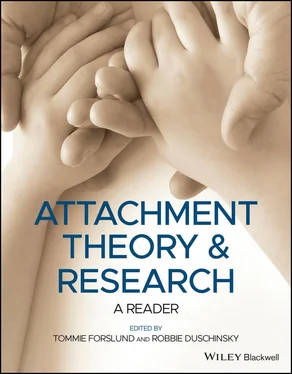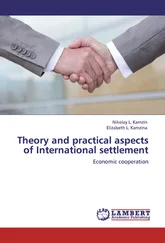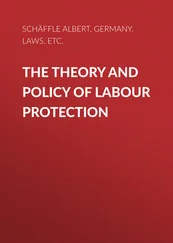The term ‘stressor’ is used to refer to any condition, external or internal to the organism, that has a stressing effect. The definition of what is a stressor varies, therefore, in parallel to the definition of stress that is being adopted.
Logically, there is much to be said for the broadest definition of stress or stressor. By adopting it we are saved the difficult task of deciding between different degrees of homeostatic disturbances, and are also adopting a usage analogous to the one found useful by physicists. In the physics, stress in a material is measured in terms of force per square inch; which means, of course, that a feather exerts a stress, however trivial it may seem, in the material on which it rests just as does a ton of lead. 10
However desirable the broadest usage may be, in clinical practice the term ‘stress’ tend to be restricted to disturbances of a degree beyond the routine and trivial; for example, as in usage (b), to those that that can be restored only by mobilising processes usually held in reserve. (This appears to be the way Selye [1950] 11 uses the term: the processes making up his defense reaction are in fact restrictive processes of a kind not usually required). There are, however, several difficulties in any restrictive usage. First, there may be several different processes usually held in reserve: how many and which ones have to be mobilised before the disturbance can be classified as stressful? Secondly, some of these reserve processes may be mobilised in minimal degree even in routine responses to homeostatic disturbance. Thus, it is unlikely that any clear line of demarcation can be drawn between a routine disturbance and one of any degree beyond the routine.
Another term also applied to disturbances of homeostasis is ‘trauma’. Although originally meaning simply ‘wound’ and still used in that sense, e.g. traumatic surgery, the term has acquired a more limited usage in the psychological sciences. When we speak of a ‘mental trauma’ we usually mean a disturbance of such degree that the course of development is, or at least is likely to be, changed for the worse. 12 This usage is identical with the most restricted usage of the term (namely [d] above). Conditions causing mental trauma can be termed ‘traumatisation’ (or possibly ‘traumatisers’).
It has been noted that a homeostatic disturbance can occasionally be of a degree that is not fully restored and so causes development to change; but that the change process can be in a direction of advantage to the organism. Such disturbances are habitually referred to as stressful, but not, of course, as traumatic. Indeed stress having this type of effect is sometimes referred to as ‘strengthening experience’. In practice, however, it is often difficult to know what the balance of long‐term effect of a major stressor will prove to be and so whether the stress produced is to be judged as traumatic or strengthening.
In what follows the terms ‘stress’ and ‘stressors’ are used fairly broadly. The varying degrees of disturbance and the varying outcomes are indicated by adjectives such as ‘routine’, ‘major’, ‘intense’, ‘strengthening’, and ‘traumatic’.
[When] behavioural systems are under load, irrespective of which category of homeostasis being disturbed, it seems to be current practice to refer to the individual’s condition as one of psychological (or emotional) stress. We consider the behavioural systems engaged in restoring steady states within each category of homeostasis in turn, starting with the simplest cases.
Any disturbance of personal‐environmental homeostasis is responded to by attempts by behavioural means to restore the steady state disturbed. Loss of a loved figure is responded to by search; a damaged home by attempts to rebuild it. As long as attempts to restore to state continue, the individual’s condition is habitually referenced to as one of psychological or emotional stress. Once success is achieved, stress ceases and relief is felt. Should the attempts fail and finally be abandoned on the other hand, stress also ceases. It is then replaced by despair and depression.
An analogous set of responses and sequences follow any disturbance of ecological homeostasis. Thus, reduction of oxygen pressure elicits attempts to escape into fresh air; a large rise or fall in temperature elicits attempts to find a more equable ambient temperature; an environment lacking water of food elicits attempts to find a more congenial habitat. Insofar as it is again behavioural systems that are under load the condition is likely to be references to as one of psychological and emotional stress.
The position regarding disturbances of morphological and physiological homeostasis is a little more complicated because, in the regulation of steady states of those sorts, two types of regulatory systems are called upon, physiological as well as behavioural. The term ‘physiological stress’, it should be noted, however, is habitually used to refer only to the load placed upon the relevant physiological systems. Insofar as a load may also be placed on relevant behavioural systems, the condition is referred to as one not of physiological but of psychological (or emotional) stress. An illustration is as follows: a person is suffering from incipient heat stroke in a desert. Physiological systems to reduce temperature are active and under heavy load. His condition would, further, be referred to as one of physiological stress. Yet simultaneously he might be struggling to escape the sun by climbing to a cave half‐way up a cliff, but be finding the feat almost beyond him. His mental state might then be referenced to as one of psychological (or emotional) stress.
The position regarding disturbances of representational homeostasis is also a little complicated because, here again, two types of regulatory systems are called upon: psychological systems as well as behavioural ones. Current usage, it appears, is to refer to the condition as one of psychological (or emotional) stress when there is any disturbance of homeostasis, irrespective of which type of regulatory systems is relied upon. Let us consider the two types of systems successively.
Representational homeostasis, it is postulated, is maintained and restored in large part by the activation of perceptual‐cognitive processes that filter and interpret sense data in ways that maintain current working models intact. Whenever the validity of a working model is called in question by the reception of incompatible yet mighty information, there is disturbance of representational homeostasis; and the perceptual‐cognitive processes activated are consequently under load. An example is a person whose basic beliefs and assumptions about the world, whether framed in religious, political or scientific form, are called seriously in question by someone whom the person regards with respect. One the one hand, the person wishes to retain his original beliefs; on the other, he finds it difficult to ignore the contrary opinion. It is clearly in accordance with current usage to refer to condition as being one of psychological stress.
An alternative way of maintaining representational homeostasis is, by appropriate behaviour, to select the information likely to reach us so that it accords with our present working models. Whatever we suspect of being incompatible is almost automatically avoided, and a substantial effort may have to be made to give it attention. Much of this selection is achieved behaviourally by selecting what we read and listen to, though, as already indicated, much censoring is done also after our sense‐organs have been exposed to the unwanted information. Should a person be forced against his wish to listen to incompatible views, as in a brain‐washing session, the experience would clearly be regarded as stressful; and his condition would be described as one of psychological (or emotional) stress.
Читать дальше












